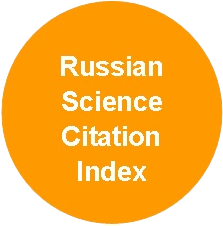Silvicultural Assessment of 47-Yeard-Old Siberian Fir Crops in the Middle Urals
DOI:
https://doi.org/10.37482/0536-1036-2025-5-92-106Keywords:
Siberian fir, crops, morphometric parameters, timber stand, cone yield, sanitary assessmentAbstract
The aim of the research has been to investigate the preservation, growth, productivity and condition of Siberian fir in age class 3 crops in different forest types in the territory of the southern taiga forests of the Middle Urals. The object of the research has become Siberian fir in 47-year-old crops planted in pine forests of 3 types: berry-lime, grass-lime and mixed-grass. When carrying out the work, the researchers have been guided by well-known methods in forestry and silviculture. There have been no improvement thinning operations in the crops over the past 30 years. It has been established that an artificial dendrocenosis has formed a complex stand with a high density of crowns. The highest preservation of fir has been noted in the berry-lime pine forest (59 %); the lowest – in the mixed-grass pine forest (41 %). The fir timber stand has been equal to 99–108 m3/ha. In all types of forests, the stand is represented exclusively by small merchantable wood. Upon reaching age class 3, fir crops are characterized as successful, since their height corresponds to quality classes I and II. Fir trees are most susceptible to morphological changes in the stem part in the mixed grass pine forest (30 %), in the grass-lime and berry-lime pine forests they are less pronounced. The maximum number of fir trees with reproductive organs has been noted in the mixed-grass pine forest (94 %), where the upper part of the crown experiences longer insolation. According to the weighted average category of sanitary condition (close to 1.0), Siberian fir crops are classified as plantations without signs of weakening. In an area with a dense arrangement of a large number of fir trees, the possibility of the appearance of various types of diseases and insects cannot be ruled out, therefore monitoring is necessary here. For the successful further growth of Siberian fir, the authors recommend the formation of a combined plantation (artificial + natural) of coniferous species, which will be stable and durable, and from a recreational point of view, more aesthetically pleasing. A proposal is also being made to organize a seed base in Siberian fir forest crops.
Downloads
References
Бажина Е.В., Аминев П.И. Особенности семеношения и морфология побегов деревьев пихты сибирской, пораженных ржавчинным раком // Изв. вузов. Лесн. журн. 2007. No 3. С. 7–13. Bazhina E.V., Aminev P.A. Peculiarities Of Seed Productivity and Shoot Morphology of Fir Trees Affected by Melampsorella Cerastii Wint. Lesnoy Zhurnal = Russian Forestry Journal, 2007, no. 3, pp. 7–13. (In Russ.).
Бажина Е.В., Третьякова И.Н. К проблеме усыхания пихтовых лесов // Успехи соврем. биологии. 2001. Т. 121, No 6. С. 626–631. Bazhina E.V., Tretyakova I.N. On the Problem of Drying Out of Fir Forests. Uspekhi sovremennoj biologii, 2001, vol. 121, no. 6, pp. 626–631. (In Russ.).
Бисирова Э.М., Кривец С.А. Динамика состояния древостоев пихты сибирской, поврежденных уссурийским полиграфом Polygraphus proximus Blandf. в Томской области // Вестн. Томск. гос. ун-та. Биология. 2018. No 44. С. 118–140. Bisirova E.M., Krivets S.A. Dynamics of the State of Siberian Fir Tree Stands Damaged by the Four-Eyed Fir Bark Beetle Polygraphus proximus Blandf. in Tomsk Oblast. Vestnik Tomskogo gosudarstvennogo universiteta. Biologiya = Tomsk State University Journal of Biology, 2018, no. 44, pp. 118–140. (In Russ.). https://doi.org/10.17223/19988591/44/7
Бобров Е.Г. Лесообразующие хвойные СССР. Л.: Наука, 1978. 189 с. Bobrov E.G. Forest-Forming Coniferous Species of the USSR. Leningrad, Nauka Publ., 1978. 189 p. (In Russ.).
Грошев Б.И., Синицин С.Г., Мороз П.И., Сеперович И.П. Лесотаксационный справочник. 2-е изд., перераб. М.: Лесн. пром-сть, 1980. 288 с. Groshev B.I., Sinitsin S.G., Moroz P.I., Seperovich I.P. Forest Inventory Guide: 2nd ed., revised. Moscow, Lesnaya promyshlennost’ Publ., 1980. 288 p. (In Russ.).
Захарова А.А. Сравнительная успешность роста чистых по составу культур пихты сибирской и пихты бальзамической при их интродукции на Смоленско-Московской возвышенности // Вестн. МГУЛ–Лесн. вестн. 2011. No 3 (79). С. 30–33. Zakharova A.A. Successful Growth of Homogeneous Siberian Fir and Balsam Fir Forest Crops Introduced in Smolensk–Moscow Highland. Lesnoy Vestnik = Forestry Bulletin, 2011, no. 3 (79), pp. 30–33. (In Russ.).
Захарова А.А., Мерзленко М.Д. Рост культур пихты сибирской при ее интродукции на Смоленско-Московской возвышенности // Леса Евразии – Польские леса. М.: МГУЛ, 2009. С. 126–129. Zakharova A.A., Merzlenko M.D. Growth Dynamics of Siberian Fir Crops in Smolensk-Moscow Highland. Lesa Evrazii – Pol’skie lesa = Forests of Eurasia – Polish Forests. Moscow, Moscow State Forest University Publ., 2009, pp. 126–129. (In Russ.).
Колесников Б.П., Зубарева Р.С., Смолоногов Е.П. Лесорастительные условия и типы леса Свердловской области: Практическое руководство. Свердловск: УНЦ АН СССР, 1973. 176 с. Kolesnikov B.P., Zubareva R.S., Smolonogov E.P. Forest Growing Conditions and Forest Types of the Sverdlovsk Region: Practical Guide. Sverdlovsk, Ural Scientific Centre of the USSR Academy of Sciences, 1973. 176 p. (In Russ.).
Крылов Г.В., Марадудин И.И., Михеев Н.И., Козакова Н.Ф. Пихта. М.: Агропромиздат, 1986. 238 с. Krylov G.V., Maradudin I.I., Mikheev N.I., Kozakova N.F. Fir. Moscow: Agropromizdat Publ., 1986. 238 p. (In Russ.).
Лесная энциклопедия. Т. 2 / Гл. ред. Г.И. Воробьев. М.: Сов. энц., 1986. 631 с. Forest Encyclopedia: vol. 2. Ed.-in-Chief G.I. Vorob’ev. Moscow, Soviet Encyclopedia, 1986. 631 p. (In Russ.).
Ненюков С.О. Естественное возобновление пихты сибирской в Нижегородской области // Пути повышения продуктивности лесных насаждений Нижегородской области. Нижний Новгород, 2002. С. 95–99. Nenyukov S.O. Natural Regeneration of Siberian Fir in the Nizhny Novgorod Region. Ways to Increase the Productivity of Forest Plantations in the Nizhny Novgorod Region. Nizhny Novgorod, 2002, pp. 95–99. (In Russ.).
Огиевский В.В., Хиров А.А. Обследование и исследование лесных культур: метод. пособ. для лесоводов. Л.: Лесн. пром-сть, 1967. 50 с. Ogievskij V.V., Khirov A.A. Survey and Research of Forest Crops: Methodical Manual for Foresters. Moscow, Lesnaya promyshlennost’ Publ., 1967. 52 p. (In Russ.).
Поздняков А.А. Основные типы пихтовых лесов в Кемеровской области // Уч. зап. Кемеровск. педагогич. ин-та. 1971. Вып. 21. С. 8–12. Pozdnyakov A.A. The Main Types of Fir Forests in the Kemerovo Region. Uchenye zapiski Kemerovskogo pedagogicheskogo instituta, 1971, iss. 21, pp. 8–12. (In Russ.).
Протопопов В.В. Средообразующая роль темнохвойного леса. Новосибирск: Наука СО, 1975. 328 с. Protopopov V.V. The Environment-Forming Role of Dark Coniferous Forest. Novosibirsk, Nauka Publ. (Siberian Branch), 1975. 328 p. (In Russ.).
Прядилина Н.К. Лесной сектор экономики Свердловской области: этапы развития, современное состояние и проблемы лесного планирования: моногр. Екатеринбург: УГЛТУ, 2019. 342 с. Pryadilina N.K. The Forestry Sector of the Sverdlovsk Region Economy: Stages of Development, Current State and Problems of Forestry Planning: Monograph. Yekaterinburg, Ural State Forestry Engineering University Publ., 2019. 342 p. (In Russ.).
Рогозин М.В., Разин Г.С. Лесные культуры Теплоуховых в имении Строгановых на Урале: история, законы развития, селекция ели. Пермь, 2011. 192 с. Rogozin M.V., Razin G.S. Teploukhovs’ Forest Crops in the Stroganov Estate in the Urals: History, Laws of Development, Spruce Breeding. Perm, 2011. 192 p. (In Russ.).
Савченко A.M. Возобновление пихтовых лесов. М.: Лесн. пром-сть, 1970. 96 с. Savchenko A.M. Regeneration of Fir Forests. Moscow, Lesnaya promyshlennost’ Publ., 1970. 96 p. (In Russ.).
Третьякова И.Н., Косинов Д.А. Морфоструктура кроны и урожайность пихты сибирской, поврежденной трутовиком гартига и «ведьминой метлой» // Лесоведение. 2003. No 5. С. 65–68. Tret’yakova I.N., Kosinov D.A. Morphological Structure and Yield of Abies sibirica Damaged by Phillinus hartigii and Melapsorella serastii. Lesovedenie = Russian Journal of Forest Science, 2003, no. 5, pp. 65–68. (In Russ.).
Фалалеев Э.Н. Пихтовые леса Сибири и их комплексное использование. М.: Лесн. пром-сть, 1964. 166 с. Falaleev E.N. Fir Forests of Siberia and Their Complex Use. Moscow, Lesnaya promyshlennost’ Publ., 1964. 166 p. (In Russ.).
Фалалеев Э.Н. Пихта. М.: Лесн. пром-сть, 1982. 88 с. Falaleev E.N. Fir. Moscow, Lesnaya promyshlennost’ Publ., 1982. 88 p. (In Russ.).
Чернов Н.Н. Опытный лесокультурный стационар // Научные и производственные объекты учебного научно-производстенного комплекса лесохозяйственного предприятия: сб. информацион. материалов. Екатеринбург: УГЛТА, Опытное лесохоз. предприятие Урал. лесотехн. акад., 1995. С. 61–66. Chernov N.N. Experimental Forestry Station. Scientific and Production Facilities of the Educational Research and Production Complex of the Forestry Enterprise: Collection of Information Materials. Yekaterinburg, Ural State Forestry Engineering Academy, Experimental Forestry Enterprise of the Ural Forestry Academy Publ., 1995, pp. 61–66. (In Russ.).
Born W., Rauschmayer F., Bräuer I. Economic Evaluation of Biological Invasions – a Survey. Ecological Economics, 2005, vol. 55, iss. 3, pp. 321–336. https://doi.org/10.1016/j.ecolecon.2005.08.014
Carneros E., Celestino C., Klimaszewska K., Park Y.-S., Toribio M., Bonga J.M. Plant Regeneration in Stone Pine (Pinus pinea L.) by Somatic Embryogenesis. Plant Cell, Tissue and Organ Culture, 2009, vol. 98, pp. 165–178. https://doi.org/10.1007/s11240-009-9549-3
Debkov N.M., Aleinikov A.A., Gradel A., Bocharov A.Yu., Klimova N.V., Pudzha G.I. Impacts of the Invasive Four-Eyed Fir Bark Beetle (Polygraphus proximus Blandf.) on Siberian Fir (Abies sibirica Ledeb.) Forests in Southern Siberia Geography, Environment, Sustainability, 2019, vol. 12, no. 3, pp. 79–97. https://doi.org/10.24057/2071-9388-2019-35
Franklin J.F., Spies T.A., Pelt R.V., Carey А.B., Thornburgh D.A., Berg D.R., Lindenmayer D.B., Harmon M.E., Keeton W.S., Shaw D.C., Bible К., Chen J. Disturbances and Structural Development of Natural Forest Ecosystems with Silvicultural Implications, Using Douglas-Fir Forests as an Example. Forest Ecology and Management, 2002, vol. 155, iss. 1–3, pp. 399–423. https://doi.org/10.1016/S0378-1127 (01)00575-8
Kamińska M., Śliwa H., Rudzińska-Langwald A. The Association of Phytoplasma with Stunting, Leaf Necrosis and Witches’ Broom Symptoms in Magnolia Plants. Journal of Phytopathology, 2001, vol. 149, iss. 11–12, pp. 719–724. https://doi.org/10.1046/j.1439-0434.2001.00703.x
Kharuk V.I., Im S.T., Petrov I.A., Dvinskaya M.L., Shushpanov A.S., Golyukov A.S. Climate-Driven Conifer Mortality in Siberia. Global Ecology and Biogeography, 2021, vol. 30, iss. 2, pp. 543–556. https://doi.org/10.1111/geb.13243
Klimaszewska K., Cyr D.R. Conifer Somatic Embryogenesis: I. Development. Dendrobiology, 2002, vol. 48, pp. 31–39.
Lelu M.A., Bastien C., Klimaszewska K., Charest P.J. An Improved Method for Somatic Plantlet Production in Hybrid Larch (Larix x leptoeuropaea): Part 2. Control of Germination and Plantlet Development. Plant Cell, Tissue and Organ Culture, 1994, vol. 36, pp. 117–127. https://doi.org/10.1007/BF00048322
Lelu-Walter M.-A., Bernier-Cardou M., Klimaszewska K. Clonal Plant Production from Self- and Cross-Pollinated Seed Families of Pinus sylvestris (L.) through Somatic Embryogenesis. Plant Cell, Tissue and Organ Culture, 2008, vol. 92, pp. 31–45. https://doi.org/10.1007/s11240-007-9300-x
Lelu-Walter M.-A., Pâques L.E. Simplified and Improved Somatic Embryogenesis of Hybrid Larches (Larix x eurolepis and Larix x marschlinsii). Perspectives for Breeding. Annals of Forest Science, 2009, vol. 66, art. no. 104. https://doi.org/10.1051/forest/2008079
Nagmani R., Diner A.M., Sharma G.C. Somatic Embryogenesis in LongLeaf Pine (Pinuspalustris). Canadian Journal of Forest Research, 1993, vol. 23, no. 5, pp. 873–876. https://doi.org/10.1139/x93-115
Niskanen A.-M., Lu J., Seitz S., Keinonen K., Weissenberg K., Pappinen A. Effect of Parent Genotype on Somatic Embryogenesis in Scots Pine (Pinus sylvestris). Tree Physiology, 2004, vol. 24, iss. 11, pp. 1259–1265. https://doi.org/10.1093/treephys/24.11.1259
Owens J.N., Molder M. Sexual Reproduction of Abies amabilis. Cananian Journal of Botany, 1977, vol. 55, no. 21, pp. 2653–2667. https://doi.org/10.1139/b77-303
Park Y.S., Lelu-Walter M.A., Harvengt L., Trontin J.F., MacEacheron I., Klimaszewska K., Bonga J.M. Initiation of Somatic Embryogenesis in Pinus banksiana, P. strobus, P. pinaster, and P. sylvestris at Three Laboratories in Canada and France. Plant Cell, Tissue and Organ Culture, 2006, vol. 86, pp. 87–101. https://doi.org/10.1007/s11240-006-9101-7
Poland T.M., Cullough D.G. Emerald Ash Borer: Invasion of the Urban Forest and the Threat to North America’s Ash Resource. Journal of Forestry, 2006, vol. 104, iss. 3, pp. 118–124. https://doi.org/10.1093/jof/104.3.118
Ponomarev V.I., Tolkach O.V., Klobukov G.I., Efremenko A.A., Pashenova N.V., Demidko D.A., Kirichenko N.I., Baranchikov Yu.N. The Potential Threats Posed by the Invasive Bark Beetle Polygraphus proximus (Coleoptera, Curculionidae: Scolytinae) to a Natural Park in the Middle Urals (Russia). Acta Biologica Sibirica, 2024, vol. 10, pp. 661–675. https://doi.org/10.5281/zenodo.12672511













